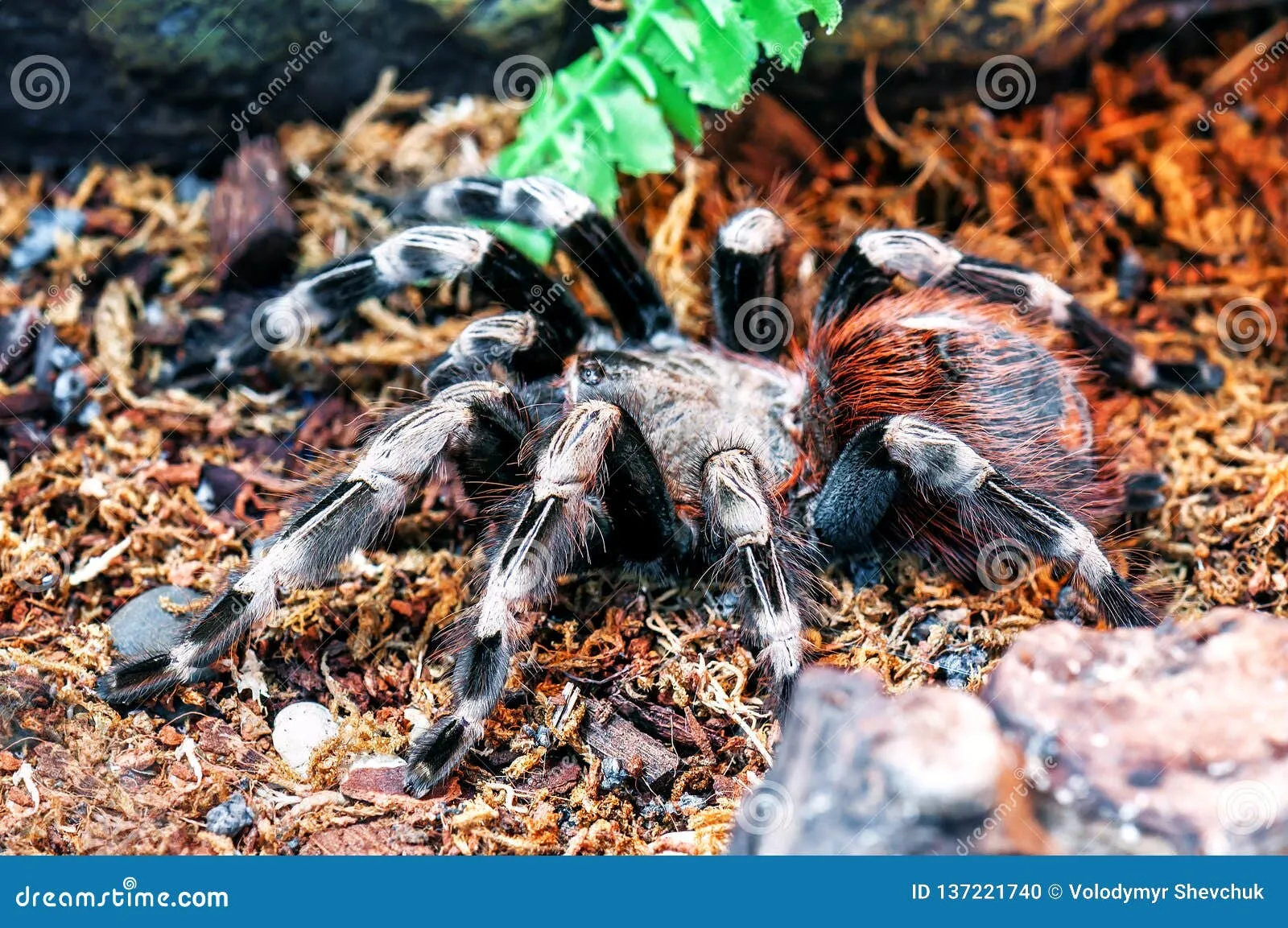Choosing Your Birdeater Tarantula
The White Striped Birdeater Tarantula, scientifically known as Acanthoscurria geniculata, is a captivating species that can make a rewarding pet for those prepared to meet its specific needs. Before acquiring one, it’s essential to understand their characteristics, care requirements, and potential challenges. This guide will provide you with the essential knowledge to ensure your tarantula thrives in a healthy and stimulating environment. Careful consideration and preparation are key to a positive experience with this impressive arachnid. This detailed care sheet will guide you in providing optimal conditions for your Birdeater Tarantula.
Appearance and Temperament
The White Striped Birdeater is renowned for its striking appearance. Adults display a primarily black body covered in long, reddish hairs. The namesake white stripes adorn their legs, creating a beautiful contrast that sets them apart. While these tarantulas are generally docile, they can be skittish and prone to flicking urticating hairs as a defense mechanism. Although not considered aggressive, it’s always important to handle them with care and respect their space. They are generally considered to be a display species due to their attractive appearance and activity level within their enclosure.
Size and Lifespan
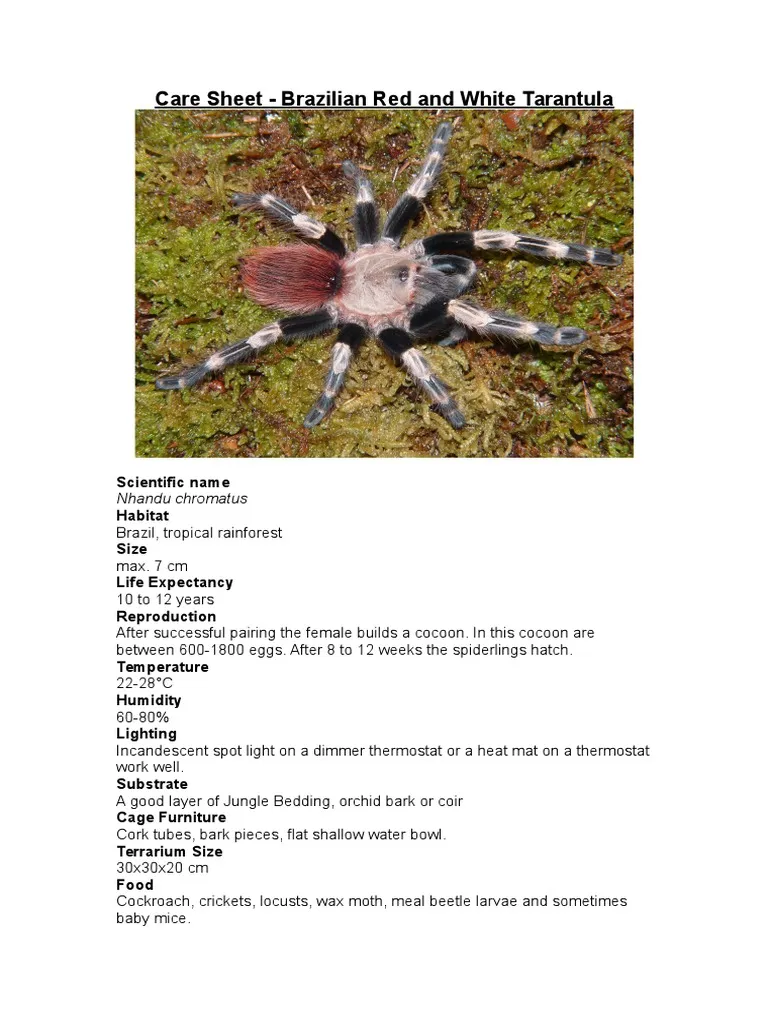
These tarantulas are large and impressive. Females can reach a leg span of up to 8-10 inches, making them one of the larger tarantula species available. Males are typically smaller. The lifespan of a Birdeater Tarantula varies depending on the sex. Females can live for 10-15 years or even longer with proper care, while males typically live for 3-5 years after reaching maturity. This longevity makes them a long-term commitment, so it’s essential to be prepared for the responsibility.
Setting Up the Perfect Birdeater Tarantula Enclosure
Creating the right environment is crucial for the health and well-being of your Birdeater Tarantula. A well-designed enclosure provides the necessary space, substrate, and climate conditions to mimic their natural habitat. This section will guide you through the essential elements of a suitable setup to ensure your tarantula thrives. A proper enclosure setup helps prevent stress and encourages natural behaviors, leading to a happier and healthier pet.
Choosing the Right Tank Size
Given their large size, Birdeater Tarantulas need ample space. A good rule of thumb is to provide an enclosure that is at least three times the tarantula’s leg span in length and width. A 10-gallon tank is suitable for a juvenile, but an adult will require a larger enclosure, such as a 20-gallon long or larger. The enclosure should be escape-proof, with a secure lid. Ensure the enclosure offers enough floor space for movement and exploration. The enclosure should be well-ventilated to prevent the buildup of excess moisture.
Substrate and Hiding Places
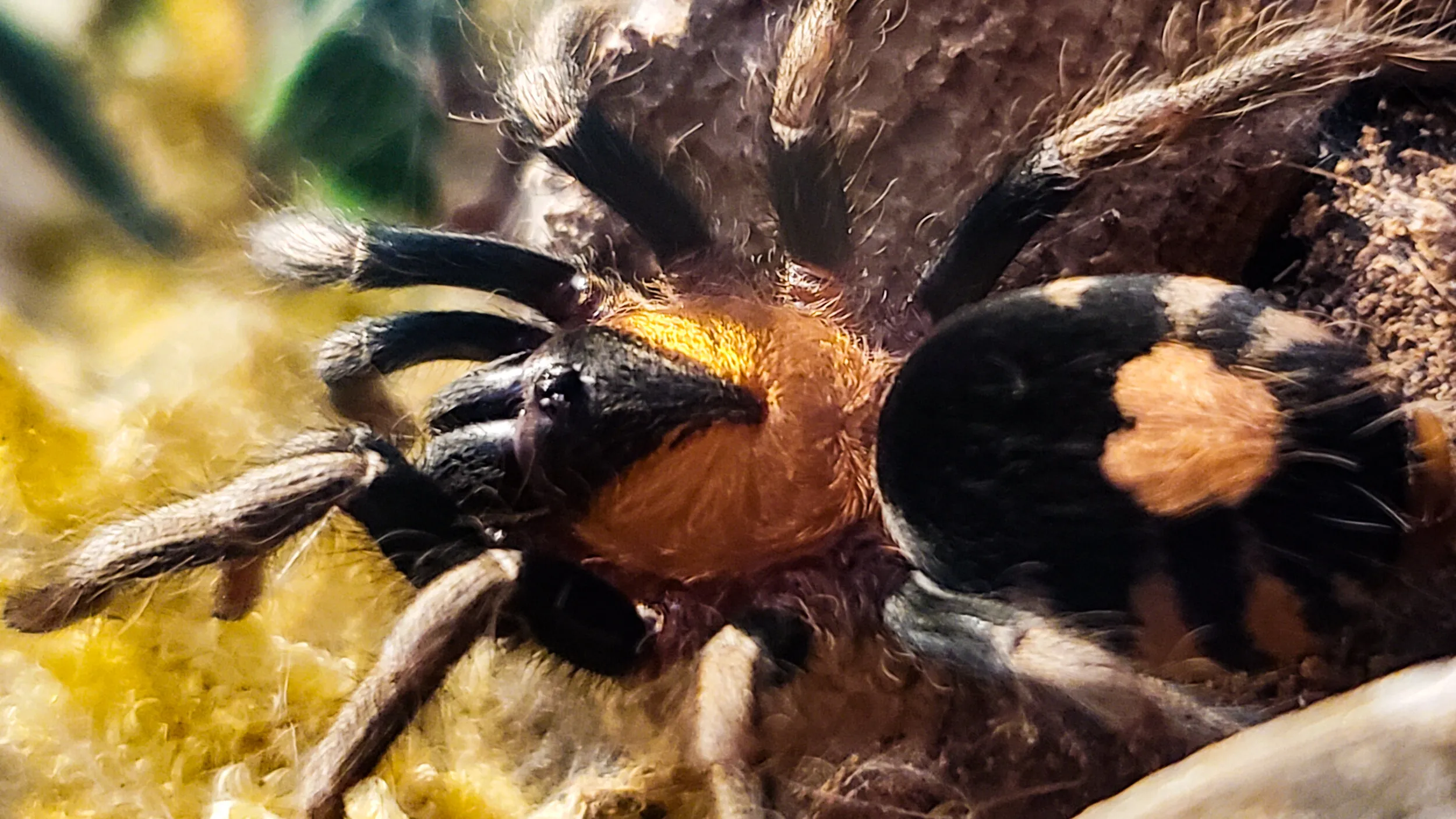
The substrate should be deep enough for burrowing if the tarantula chooses to do so. A mixture of coco fiber, peat moss, and a small amount of vermiculite is an excellent choice, as it retains moisture well. The substrate should be at least 4-6 inches deep for adults. Provide a hide, such as a cork bark, a hollow log, or an artificial hide, where the tarantula can retreat and feel secure. Plenty of hiding places can help reduce stress. Also, add some decorations like fake plants or branches to enrich the environment.
Temperature and Humidity Requirements
Birdeater Tarantulas thrive in a temperature range of 75-85°F (24-29°C). A heat mat placed on the side of the enclosure, controlled by a thermostat, can help maintain this temperature. Avoid placing the heat mat directly under the enclosure, as this can overheat the substrate. Maintaining humidity levels is crucial. Aim for a humidity level of 65-75%. This can be achieved by misting the enclosure lightly with dechlorinated water every few days and ensuring the substrate remains slightly moist. A hygrometer is essential for monitoring humidity levels.
Feeding Your Birdeater Tarantula
Proper nutrition is essential for the health and growth of your Birdeater Tarantula. They are voracious eaters, and providing the right food at the right frequency will ensure they thrive. Careful attention to diet will contribute significantly to their overall health and well-being. Make sure to source your feeder insects from a reputable supplier to minimize the risk of introducing parasites or diseases to your tarantula.
What to Feed Your Tarantula
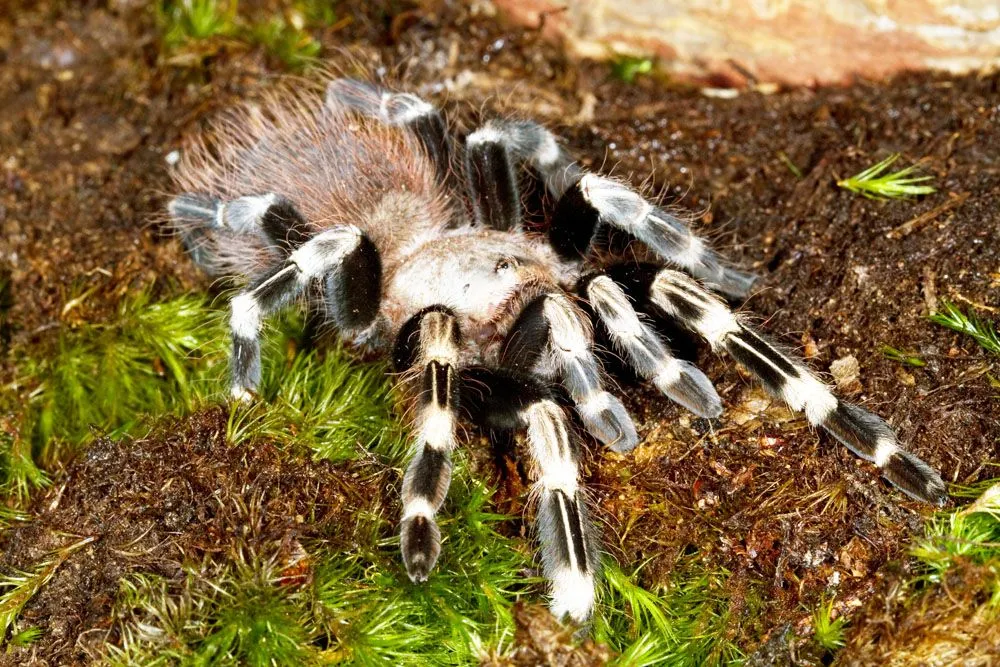
The primary diet of a Birdeater Tarantula consists of insects. Crickets, roaches, and mealworms are excellent choices. The size of the prey should be appropriate for the size of the tarantula; juveniles should be given smaller insects, while adults can handle larger prey. Always remove any uneaten food within 24 hours to prevent mold and mites. Gut-load feeder insects with nutritious food (such as fruits, vegetables, and commercial insect food) before feeding them to your tarantula to ensure your tarantula gets the most nutrients.
Feeding Frequency
Feeding frequency depends on the age and size of the tarantula. Spiderlings and juveniles should be fed 2-3 times a week. Sub-adults can be fed once a week, and adults can be fed once every 1-2 weeks, or as needed based on their abdomen size. Adjust the feeding schedule depending on their appetite and activity level. A well-fed tarantula will have a plump abdomen. Overfeeding can be detrimental, leading to health issues.
Water and Hydration
Provide a shallow water dish with fresh, dechlorinated water at all times. The water dish should be small enough to prevent the tarantula from drowning. Change the water in the dish every few days to keep it clean. Alternatively, mist the enclosure with water, especially during molting to help with the process. Ensure that the water source is always available to maintain proper hydration.
Handling and Safety
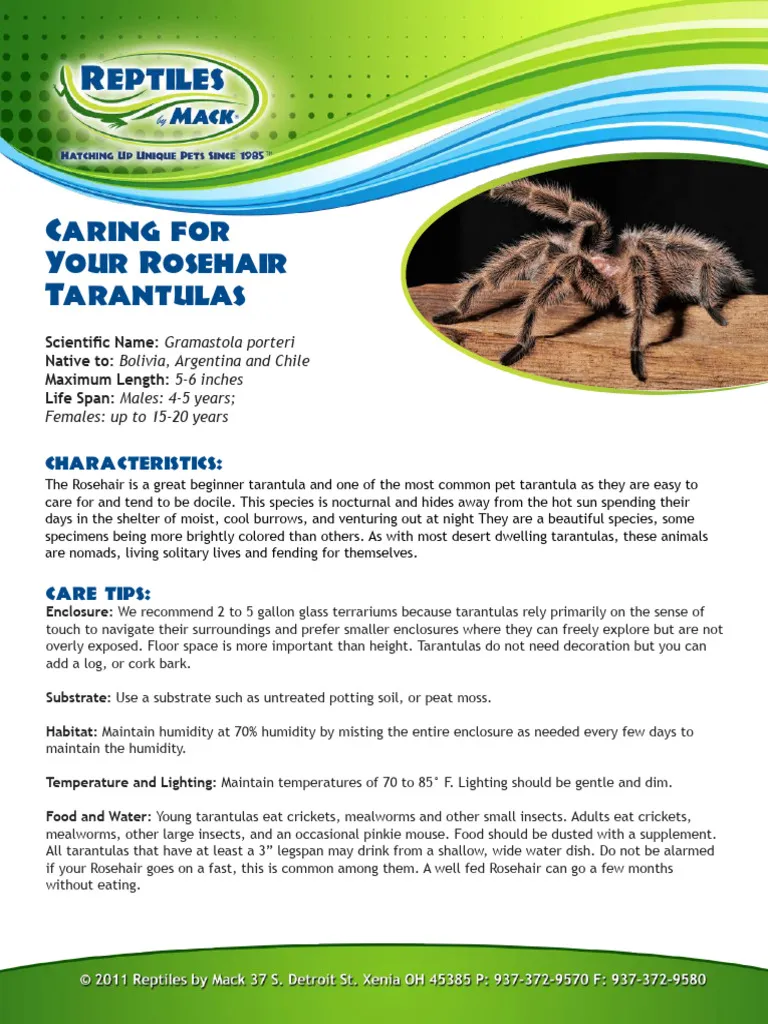
While Birdeater Tarantulas are generally considered docile, handling them should be approached with caution and a good understanding of potential risks. Always prioritize your safety and the safety of your tarantula. Understanding their defense mechanisms and potential for bites is crucial to prevent any accidents. Handling should be kept to a minimum to reduce stress on the tarantula.
Handling Best Practices
If you choose to handle your Birdeater Tarantula, do so gently and calmly. Always handle them close to the ground or a soft surface to minimize the risk of injury if they fall. Avoid sudden movements or loud noises, as these can startle the tarantula. Wash your hands thoroughly before and after handling to prevent the transfer of any substances. Be mindful of urticating hairs, which can cause skin irritation. Do not handle them if they show signs of stress or aggression.
Potential Risks
Birdeater Tarantulas can bite, although it is rare. Their bite is not medically significant to humans, but it can be painful. They also possess urticating hairs, which they can flick off their abdomen as a defense mechanism. These hairs can cause skin irritation and, if they get into your eyes or respiratory tract, can be very irritating. Avoid touching your face or eyes after handling your tarantula or working in their enclosure. Always wash your hands thoroughly. Be aware of their posture; a defensive stance, like raising their front legs or exposing their fangs, indicates they are feeling threatened.
Health and Common Issues

Keeping an eye on your Birdeater Tarantula’s health is a crucial part of responsible pet ownership. Knowing the signs of common issues and what to do can ensure your tarantula lives a long and healthy life. Regular observation and proactive measures will contribute to their well-being. Prevention is key when it comes to maintaining your tarantula’s health.
Moulting and What to Expect
Moulting is a natural process where tarantulas shed their exoskeleton to grow. Before moulting, your tarantula may become inactive, lose appetite, and their abdomen may appear dark and swollen. Provide a moist environment and avoid disturbing them during this time. Once moulting begins, it can take several hours. After moulting, the tarantula will be vulnerable and soft. Avoid feeding them for a week or two, allowing their new exoskeleton to harden. A healthy moult is a sign of a healthy tarantula. The old exoskeleton will be a complete replica of the tarantula.
Preventing Health Problems
The most common health problems in tarantulas are related to poor husbandry, such as improper humidity, temperature, or substrate. Always maintain the correct temperature and humidity levels. Prevent fungal infections by ensuring good ventilation and removing uneaten food. Clean the enclosure regularly to prevent the buildup of waste and bacteria. Ensure proper nutrition to promote a strong immune system. If you notice any signs of illness, such as loss of appetite, lethargy, or unusual behavior, consult with a veterinarian experienced in exotic animals. Providing optimal care minimizes stress and health risks.
Conclusion
Caring for a White Striped Birdeater Tarantula can be a rewarding experience. By following this care sheet, you can create a thriving environment for your tarantula, ensuring its health and longevity. Remember to research and prepare thoroughly before acquiring any pet, including a tarantula. Regular observation, consistent care, and a passion for learning are essential for success. Enjoy the fascinating world of these amazing arachnids, and watch your Birdeater Tarantula flourish!
